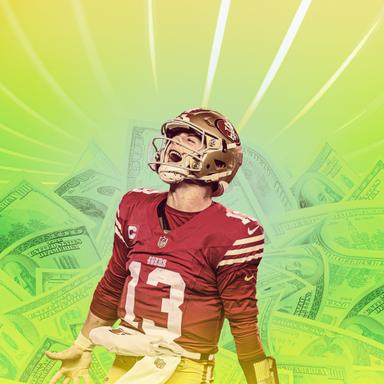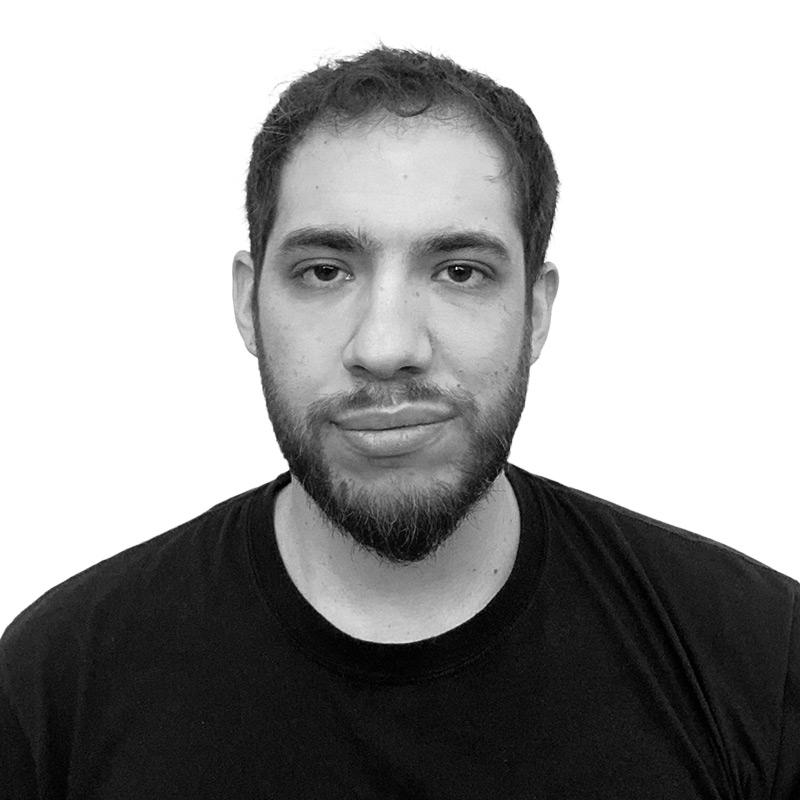Days after the rough 2024 season ended for the San Francisco 49ers, head coach Kyle Shanahan looked ahead. The defending NFC champions had stumbled through an uneven 6-11 campaign and missed out on the playoffs—but on the bright side, Shanahan had found his franchise quarterback. “I’ve loved these three years with Brock [Purdy],” the coach said on January 8. “I plan on being with Brock here the whole time I'm here.”
On Friday, four months later, that plan was solidified when Purdy agreed to a five-year, $265 million contract with $181 million guaranteed. This marks a massive payday for the quarterback, who was drafted in the seventh round just three years ago—and it will also necessitate significant shifts in both how the 49ers front office goes about building the roster and how Shanahan designs the offense. The team has some experience building around an expensive quarterback after making Jimmy Garoppolo the league’s highest-paid player in 2018. But a thin roster and clean cap situation allowed San Francisco to front-load the deal.
This time, San Francisco is paying Purdy in the middle of a championship window, and now that he’s starting to take up a far bigger chunk of the cap than he has in recent seasons, the dynamic of the offense is flipping. The front office had already transitioned away from the model of the cheap quarterback and expensive supporting cast months before Purdy signed his new deal when it traded away Deebo Samuel, one of the key members of the Monstars offense that tore through NFL defenses in 2023. And the roster purge will likely continue as Purdy’s cap hit escalates over the next few years. Star receiver Brandon Aiyuk might have been dealt this offseason if he weren’t still recovering from a nasty knee injury. Star left tackle Trent Williams could be heading into his final season with the team, given his age (36) and contract structure. The 49ers could also move on from Christian McCaffrey next offseason if this campaign resembles his injury-marred 2024 season. After he signed a $76.4 million extension in April, George Kittle might be the only core member of the 2023 supporting cast—which produced the best 49ers offense of the Shanahan era by a comfortable margin—who has a guaranteed spot on the roster in 2026. But he’s 31 years old and has a long track record of injuries, too. If Shanahan somehow manages to get the 49ers offense back to the level we saw in 2023, it will almost certainly look different than it did two seasons ago.
Considering everything the Niners went through in 2024—losing Williams, McCaffrey, Samuel, and Aiyuk for extended time—it’s easy to write off the season as an outlier from hell. But when you take a step back and consider the entirety of Shanahan’s time in San Francisco, 2023 is the year that seems like more of an outlier, while 2024 falls closer to the baseline results we’ve seen from the offense since it first got rolling in 2019.
The 49ers Offense Under Kyle Shanahan, by Season (TruMedia)
I’ll give Shanahan a pass for that 2020 season, when seemingly every key offensive player got hurt and the Niners comfortably led the NFL in adjusted games lost. But even with Nick Mullens and C.J. Beathard throwing passes to Ross Dwelley and Richie James for stretches of the season, San Francisco finished 17th in expected points added per dropback, per TruMedia. That’s just as impressive as anything Shanahan’s offense achieved in 2023. Outside of that season and the 2023 campaign, the 49ers' passing attack has been remarkably consistent, averaging from 0.11 to 0.15 EPA per dropback. The 2023 season is the high-water mark, but it might be an unrealistic goal for the passing game going forward. That year should be seen as the ceiling for a Shanahan offense—when he has a loaded roster and everyone stays healthy. But the good news is that the baseline results we’ve seen in other years have been more than good enough to keep the 49ers in contention. San Francisco made a Super Bowl after the 2019 season with a passing game that was on par with what we saw in 2024, and it fell one game short of the Super Bowl after the 2021 season with a similar passing game. In other words, Shanahan doesn’t really need to get much more out of the passing game to get the 49ers back to their contending ways. He certainly doesn’t need Purdy to replicate his 2023 season to do it.
But Shanahan does need more out of his running game or the Niners defense. San Francisco had subpar run games during its two deep playoff runs, but in both cases it had an elite defense to make up for it. That unit fell off with the departure of defensive coordinator DeMeco Ryans after the 2022 season, but the trade for McCaffrey gave the run game the shot in the arm it needed to offset that regression. This offseason, the 49ers brought back former defensive coordinator Robert Saleh, which has inspired some hope that the defense will rebound—but then you look at the projected defensive depth chart, which is awfully thin behind Nick Bosa and Fred Warner, and it’s hard to imagine this unit producing championship-level results unless the front office absolutely nails some defensive draft picks in upcoming years. So if the 49ers are going to reclaim their status as annual contenders with Purdy’s contract in play, Shanahan will have to figure out a way to get his run game rolling again.
A top run game has been the common denominator of Shanahan’s best offenses across his 15 years as a play caller. And while his wide-zone run scheme doesn’t work as designed all the time, it rewrites record books when it does. Since Shanahan started calling plays in 2009, his run games have had a positive season-long EPA per rush four times: 2012 in Washington (Robert Griffin III’s rookie season), 2016 in Atlanta (Matt Ryan’s MVP campaign), and then in both 2022 and 2023 in San Francisco (Purdy’s breakout seasons). If you give Shanahan a stout running game to go along with his high-floor passing attack, league-leading results typically follow.
But all of those offenses were buoyed by transcendent talent. The 2012 Washington team wasn’t stacked by any means, but running the zone read with RGIII had opposing teams in absolute hell, which made the passing game much easier to execute. In Atlanta, Shanahan had Julio Jones, the league’s most dominant receiver at the time, and a running back tandem of Devonta Freeman and Tevin Coleman. In 2022 and 2023, Shanahan had McCaffrey, plus the NFL’s deepest group of pass catchers. Shanahan’s passing game will always be productive—but we haven’t seen him build a good, efficient run game when he doesn’t have a massive talent advantage. Assuming that paying Purdy just over $50 million a season will make it more difficult—if not impossible—to build a talent-rich roster on either side of the ball, the 49ers’ future success could come down to Shanahan’s ability to scheme up a run game in a way we haven’t seen before.
When quarterbacks sign gigantic new deals, the pressure is typically on them to produce. That will of course be somewhat the case in San Francisco, but we may have seen the floor for Purdy and the pass game last season—and that was still good enough to convince ownership to hand him the biggest deal in franchise history. Rather, this contract gives Purdy a level of job security that his head coach—and, really, any NFL head coach—will never enjoy. And instead of putting the onus on him to make sure this team succeeds, it shifts the focus onto Shanahan.
When Shanahan said he’d like to work with Purdy for the rest of his time with the 49ers, he probably envisioned a decade-long run including multiple trips to the Super Bowl, and not a stressful few years ending with a pink slip. But both scenarios fall within the realistic range of outcomes now that the 49ers have paid their franchise quarterback. The pressure, now, sits firmly on Shanahan’s shoulders; he’ll need to find a new way to win. And if he’s unable to, it won’t be his quarterback who’s blamed.


